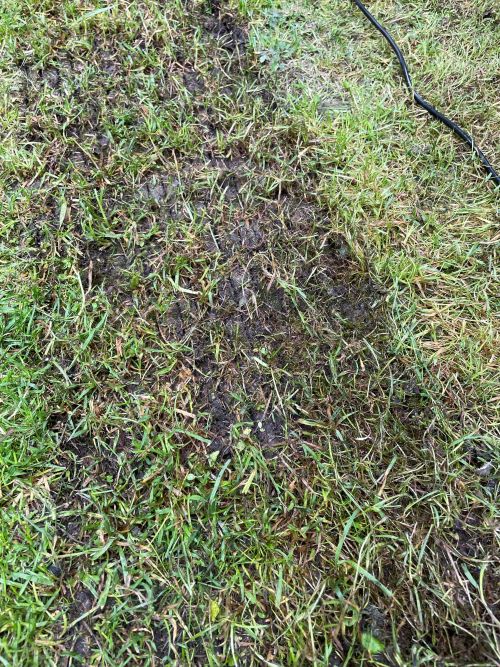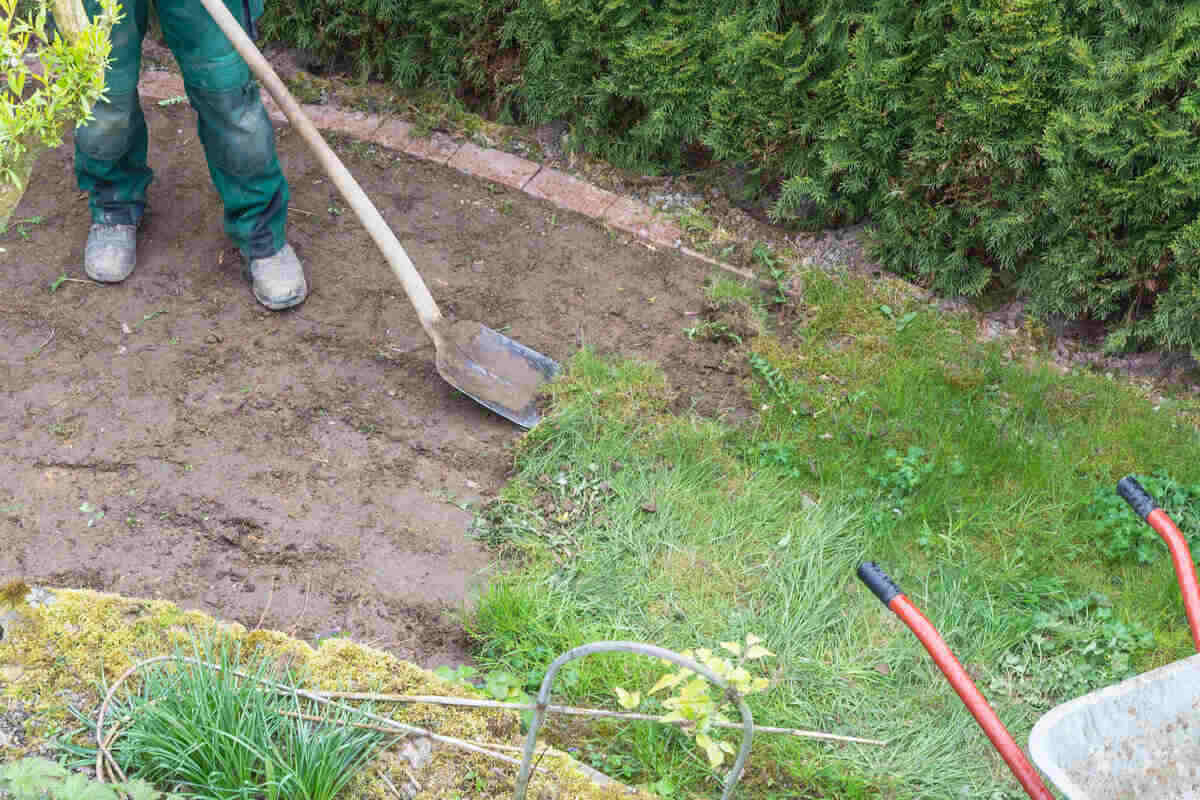Is your lawn looking tired, patchy, or overrun with weeds? If you want a fresh, green space to enjoy, sometimes the best solution is to tear up your old lawn and start over with reseeding.
It might sound like a big job, but with the right steps, you can transform your yard into a lush, healthy lawn that makes your neighbors stop and stare. You’ll discover how to tear up a lawn and reseed, effective ways to remove your old grass and prepare your soil for new seeds.
By the end, you’ll be ready to roll up your sleeves and give your lawn the makeover it deserves. Keep reading to learn exactly how to do it right!

Credit: www.youtube.com
Preparing The Lawn For Tearing Up
Preparing the lawn for tearing up is the first key step to a fresh, green yard. Proper preparation makes reseeding easier and more successful. It helps to avoid problems later. Understanding your lawn’s current state guides you on what to do next. Gathering the right tools saves time and effort. Marking problem areas shows you exactly where to focus work.
Assessing Lawn Condition
Look closely at your lawn’s health. Check for dead grass, weeds, or bare spots. Notice if the soil is hard or compacted. See if the grass is patchy or thin. Identify signs of pests or diseases. This assessment helps decide how much tearing up is needed. It also shows if you must fix soil problems first.
Gathering Tools And Materials
Collect all tools before starting. You need a shovel or sod cutter to remove grass. A rake helps clear debris and loosen soil. A lawn aerator improves soil breathing if needed. Buy quality grass seed suited for your area. Get fertilizer and soil amendments to boost growth. Having these ready makes the work smoother.
Marking Problem Areas
Walk around the lawn and mark spots with issues. Use flags or spray paint to highlight bare or damaged areas. Mark places with weeds or soil problems too. Clear markings guide you during tearing up and reseeding. It also helps avoid missing trouble spots. This step saves time and ensures thorough work.
Removing The Existing Lawn
Removing the existing lawn is the first step to create a fresh and healthy yard. Clearing old grass helps new seeds grow better. It also stops weeds and dead roots from blocking growth. Choose a removal method that fits your time, tools, and lawn size. Proper removal prepares the soil for reseeding and improves your lawn’s chances of success.
Manual Removal Techniques
Manual removal is simple and costs little. Use a shovel or garden fork to dig up grass in small sections. Pull the grass and roots out carefully to avoid soil damage. This method works well for small lawns or patches. It takes time but gives you control over the job.
Using Lawn Sod Cutter
A lawn sod cutter speeds up the removal process. It slices the grass and roots evenly in strips. This tool is perfect for larger areas and saves effort. Run the cutter along your lawn, then roll up the strips. It leaves a clean surface ready for reseeding.
Disposing Of Old Grass
Remove old grass properly to avoid pests and diseases. Collect the grass clumps and sod strips in bags or a compost bin. Do not leave old grass on the soil, as it can harm new seeds. Follow local rules for yard waste disposal. Clean removal helps your new lawn grow healthy and strong.
Soil Preparation After Removal
After tearing up your lawn, preparing the soil is key for a fresh start. Good soil helps new grass grow strong and healthy. This step creates a smooth base and improves soil quality. Proper preparation saves time and effort later.
Clearing Debris And Roots
Remove all leftover grass, roots, and rocks. These can block new roots from growing deep. Use a rake or garden fork to clear the area. Make sure the soil is free from old debris. Clean soil helps seeds settle and sprout well.
Testing And Amending Soil
Test your soil’s pH and nutrient levels using a simple kit. Grass prefers soil that is slightly acidic to neutral. Add lime to raise pH or sulfur to lower it. Mix in compost or fertilizer to improve nutrients. Healthy soil gives grass the energy to grow fast.
Leveling The Ground
Use a rake to smooth out bumps and holes. A flat surface prevents water from pooling in spots. Fill low areas with soil and compact it gently. Level ground makes mowing easier and helps grass grow evenly. Check the surface from different angles to ensure evenness.

Credit: moowy.co.uk
Choosing The Right Grass Seed
Choosing the right grass seed is important for a healthy lawn. The right seed helps grass grow strong and stay green. It also saves time and money. The seed must match your climate, sunlight, and soil type. This guide helps you pick the best grass seed for your lawn.
Selecting Seed For Climate
Grass types grow best in certain climates. Cool-season grasses work well in northern areas. They stay green in spring and fall. Warm-season grasses thrive in southern regions. They handle heat and dry weather better. Check your local climate before buying seed. Choose seed that fits your weather and temperature.
Considering Sunlight And Soil Type
Grass needs sunlight to grow. Some grasses like full sun. Others do better in shade. Know how much sun your lawn gets. Also, test your soil type. Sandy, clay, or loamy soil affects grass growth. Pick seed that matches your soil and light levels. This helps grass grow healthy and thick.
Purchase Quality Seed
Quality seed makes a big difference. Buy seed from trusted stores or brands. Check the seed label for purity and germination rates. Avoid old or mixed seeds. Fresh seed grows faster and better. Good seed saves effort and gives a lush lawn.
Seeding The Lawn
Seeding the lawn is a key step in growing fresh, healthy grass. It helps fill bare spots and gives your yard a lush look. The right method ensures seeds get good soil contact and enough moisture. This boosts germination and root growth.
Careful seeding sets the stage for strong, even grass. Follow each step closely for best results.
Spreading Seed Evenly
Use a broadcast spreader or hand spread seeds. Walk slowly and steadily across the lawn. Spread seeds in one direction first. Then, go over the lawn again at a right angle. This creates an even seed layer and avoids bare patches.
Raking And Covering Seed
Lightly rake the soil after spreading seeds. This mixes seeds with the soil. Cover seeds with a thin layer of soil or compost. This protects seeds from birds and wind. It also keeps moisture around the seeds for better growth.
Watering Schedule
Water the lawn gently right after seeding. Keep the soil moist but not soaked. Water 2-3 times daily for the first two weeks. Reduce watering as grass starts to grow. Deep watering once or twice a week helps roots grow strong.
Post-seeding Lawn Care
Post-seeding lawn care is vital for a healthy, green yard. It helps new grass grow strong and thick. Proper care after seeding ensures your lawn fills in well. Follow these steps to keep your lawn thriving after reseeding.
First Mowing Tips
Wait until grass blades reach about 3 inches tall. Mow carefully to avoid damaging young grass. Use a sharp mower blade for a clean cut. Set mower height high, around 2.5 to 3 inches. Avoid mowing too short to protect roots. Mow only dry grass to prevent clumping.
Fertilizing For Growth
Apply a starter fertilizer with nitrogen and phosphorus. Fertilize about 4 to 6 weeks after seeding. Use a slow-release fertilizer to feed grass steadily. Follow package instructions to avoid overfeeding. Water lawn lightly after fertilizing to help absorption. Fertilizing supports strong root and blade development.
Preventing Weeds And Pests
Keep an eye out for weed sprouts and remove them quickly. Use a gentle herbicide safe for new grass if needed. Avoid heavy chemicals that can harm young grass. Control pests like grubs by keeping grass healthy. Water lawn early in the day to reduce disease risk. Healthy grass resists weeds and pests better.
Troubleshooting Common Issues
Tearing up a lawn and reseeding can bring fresh life to your yard. Yet, common problems often arise during this process. Knowing how to troubleshoot these issues helps ensure a healthy, green lawn. Addressing problems early prevents bigger challenges later.
Dealing With Patchy Growth
Patchy growth happens when grass fails to spread evenly. Uneven seed distribution causes this. Reseed the bare spots using a hand spreader for better coverage. Water these areas lightly but often. Avoid heavy watering that washes seeds away. Thin soil or poor sunlight also affects growth. Add topsoil to thin spots and trim nearby trees to increase sunlight.
Handling Soil Erosion
Soil erosion removes topsoil and seeds. It mostly happens on slopes or after heavy rains. Use mulch or straw to cover seeded areas. This protects the soil and holds moisture. Create small barriers like edging or terraces on slopes. Plant ground cover plants to stabilize soil. Avoid walking on newly seeded spots to keep soil intact.
Addressing Drainage Problems
Poor drainage leads to water pooling and weak grass roots. Check for low spots where water collects. Fill these areas with soil to level your lawn. Install drainage pipes or French drains if needed. Aerate the soil to improve water flow. Use sand or organic matter to loosen compacted soil. Proper drainage helps seeds grow strong and healthy.

Credit: lawnlove.com
Frequently Asked Questions
How Do I Prepare My Lawn Before Tearing It Up?
Start by watering the lawn a day before. Remove debris and mow grass short. Mark underground utilities to avoid damage during removal.
What Tools Are Needed To Tear Up A Lawn?
You’ll need a sod cutter or shovel, rake, and wheelbarrow. A tiller helps break up soil for reseeding. Gloves and protective gear are also essential.
When Is The Best Time To Reseed A Lawn?
Early fall or spring is ideal. Soil is warm, and moisture levels support seed germination. Avoid extreme heat or frost for better results.
How Do I Ensure Good Seed-to-soil Contact?
After tearing up, rake soil smooth and firm. Spread seed evenly and lightly rake again. Water gently to settle seeds into soil.
Conclusion
Tearing up a lawn and reseeding takes time and care. Start by removing old grass and weeds well. Prepare the soil so seeds can grow strong. Spread seeds evenly and water them gently. Watch for new grass to sprout and keep it moist.
Patience is key; lawns do not grow overnight. Follow these steps for a fresh, green yard. Your hard work will pay off with a healthy lawn. Enjoy the beauty and comfort of your new grass.

